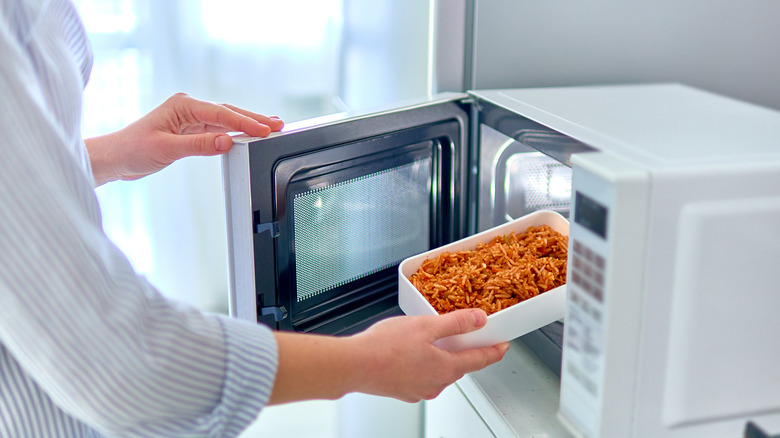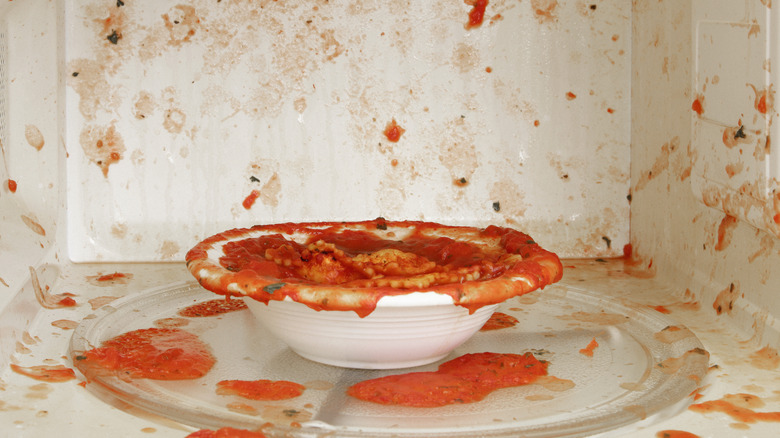Why Sauce Pops In The Microwave (And How You Can Try To Control It)
Since their accidental creation, microwaves continue to hold a mysterious aura inside their tight-shutting doors. Patented in 1945, the tool only became widespread in the 1970s, yet sales stagnated in the 2000s. Sure, maybe changes in dining trends are partially to blame, as is the extensive list of things you shouldn't put in a microwave. Although — perhaps most fear-inducing — there's the potential messiness of the cooking experience.
Place a sauce onto the spinning stage, and you might just end up with an explosive and hard-to-clean disaster. Yet take the time to understand why thicker liquids burst inside this metal box, and you can still heat sauces with ease. Even celebrated chef David Chang champions this misrepresented tool; so nuking a bowl of last night's alfredo shouldn't spark a deep-seated worry.
Really, it all comes down to air: Steam is the bubbly culprit. Microwaves work by vibrating molecules within food, however, the contained water heats up faster than the fat and sugars. Subsequently, in sauces and other heterogeneous mixtures, the water starts to evaporate while still enclosed by cooler components. The unrestrained steam pops through the oil, sending your sauce flying all over. Indeed, such uneven application of heat is one of the appliance's major downsides, and a reason why they're not made to defrost foods. However, when reheating a simple sauce, there are ways to manage the issue.
Reheat sauces in the microwave with frequent stirring
Before placing a sauce in the microwave, take note that some liquids reheat better than others. Generally, the greater the ratio of oil to water, the more turbulence the result. So if you're nuking a marinara or pizza sauce, a romesco, or a condiment heavy on chili oil, proceed with added caution — such liquids turn dramatic fast. Meanwhile, thinner sauces like coulis and homogenous mixtures like a cheese sauce enable a more stress-free microwave experience.
Once it's time to program the metal appliance, keep the saying "patience is a virtue" in mind. Lower your microwave intensity to a mild 60% or so, then proceed in measured bursts of around 15 seconds. Remove the container, and agitate thoroughly, adding a touch of water if necessary. Some mild popping is still possible, so bust out a microwave cover to keep it all in a controlled environment. When the sauce is divided into smaller portions, it'll warm quickly — no mess involved. And if you do happen to experience an explosion, a simple moist paper towel should clean up the sauce with ease, but don't forget to clean the turntable, too. Proceed with such caution, and you'll shatter the microwave's enigmatic image.


